In this post, anthropologist Dr. Camilla Borrevik offers some insights into events and developments that took place at COP25 in Madrid (December 2019), with special attention to the connection between ocean and climate in the United Nations Framework Convention on Climate Change.
![]()
Hopes were high ahead of the United Nations (UN) climate talks at the 25th Conference of the Parties (COP25) in Madrid. Albeit some rocky weeks prior to the annual negotiations – which involved having to move the giant conference across continents from Chile to Spain – the Chilean COP Presidency flagged high hopes for increasing countries’ climate ambitions ahead of 2020.
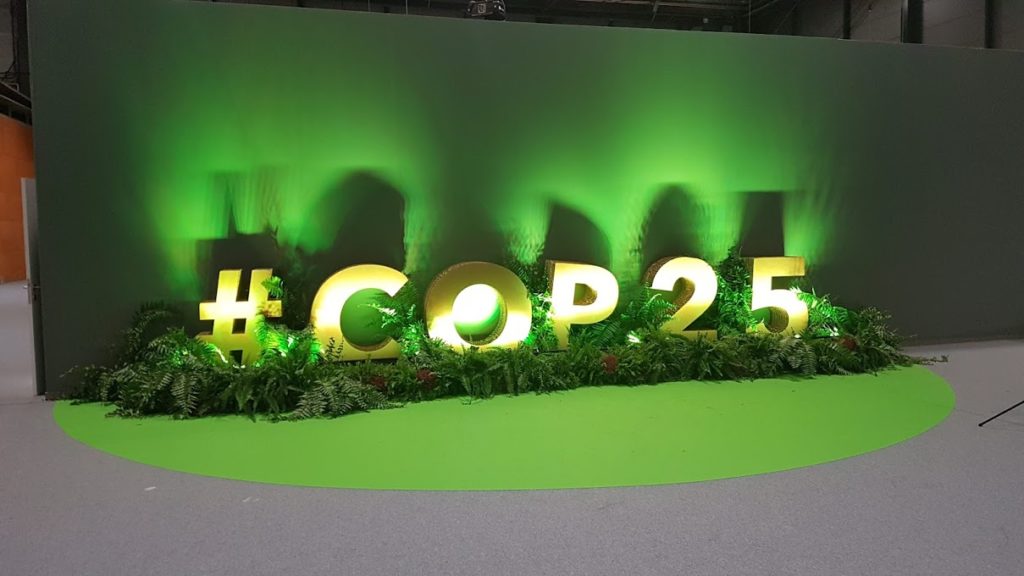
A much-anticipated outcome included new rules for the global carbon market, also known as Article 6 of the Paris Agreement. Negotiators and observers ran from meeting to meeting in an attempt to settle this heavily debated and long overdue issue – many of them wearing a bright green pin with the following hopeful text: “All I want for Christmas is Article 6”. As it turned out, these negotiators, nor the world at large, did get their Christmas wish fulfilled. Instead, they got two paragraphs of the final decision text that states that talks will continue in 2020.
![]()
I, on the other hand, got what I wished for: namely an ocean-climate nexus under the United Nations Framework Convention on Climate Change (UNFCCC). It must have been a good year.
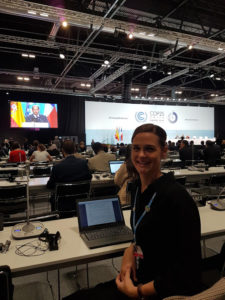
Borrevik in the High Level Segment of COP25 where countries give their national statements
I participated at COP25 as part of the Palau Delegation to provide support with the negotiations. The primary focus of my participation this year was climate-ocean action and relevant outcomes. In April, the Chilean Presidency decided that the summit was to be a “Blue COP” with a particular focus on oceans. The focus on oceans comes timely as the world at large gears up to what will be an important year next year with the UN Ocean Conference, the negotiations on the treaty on the conservation and sustainable use of marine biodiversity of areas beyond national jurisdiction (BBNJ), the Conference of the Parties to the Convention on Biological Diversity (CBD), and more, coming up in 2020. There is hope to see countries increase their overall climate ambition—given that dramatically reducing emissions is the single most important thing for the ocean—and also incorporate ocean issues into their climate goals.
Historically, within the UNFCCC and at COPs, ocean and climate issues have been kept separate. There are however several linkages between the two that open up the possibility to integrate oceans into the UNFCCC process. These linkages provided countries (called “Parties” under the Convention) with an opportunity to highlight ocean as a vital part of climate change discussions. This work has been ongoing for several years and has been an important focus for many Pacific countries during the past climate negotiations.
![]()

The consequences for nature and humanity are severe according to the latest IPCC report.
At the 23rd Conference of Parties (COP 23) in 2017, under Fiji’s Presidency, the Ocean Pathway Partnership was launched through a Fiji-Sweden partnership. Ocean Pathway was founded with a two-pathway strategy for 2020 supporting the goals of the Paris Agreement that includes: 1) integrating oceans into the UNFCCC process, and 2) increasing action in priority areas to ensure inclusion of oceans in Nationally Determined Contributions (NDCs). Ocean Pathway gave rise to the Friends of the Ocean and Climate network, which is a gathering of countries and organisations who support ocean-climate action. Friends of the Ocean and Climate have held numerous meetings and workshops in the past few years, and the group was important in pushing the ocean-climate nexus forward at this year’s COP25. It was unclear, however, whether COP25 would be successful as a “Blue COP” until the very final discussions.
![]()
There were more than 90 ocean-related events at COP25, ensuring that it maintained momentum as a “Blue COP”. Although the official Ocean Day was Saturday 7 December, ocean related events were organised every day across the pavilions. Many of the country pavilions also organised several receptions that aimed to highlight the importance of ocean and that provided a fruitful space for networking. The Chilean COP Presidency also highlighted the importance of this being a “Blue COP” and expressed a clear desire to live up to its name.
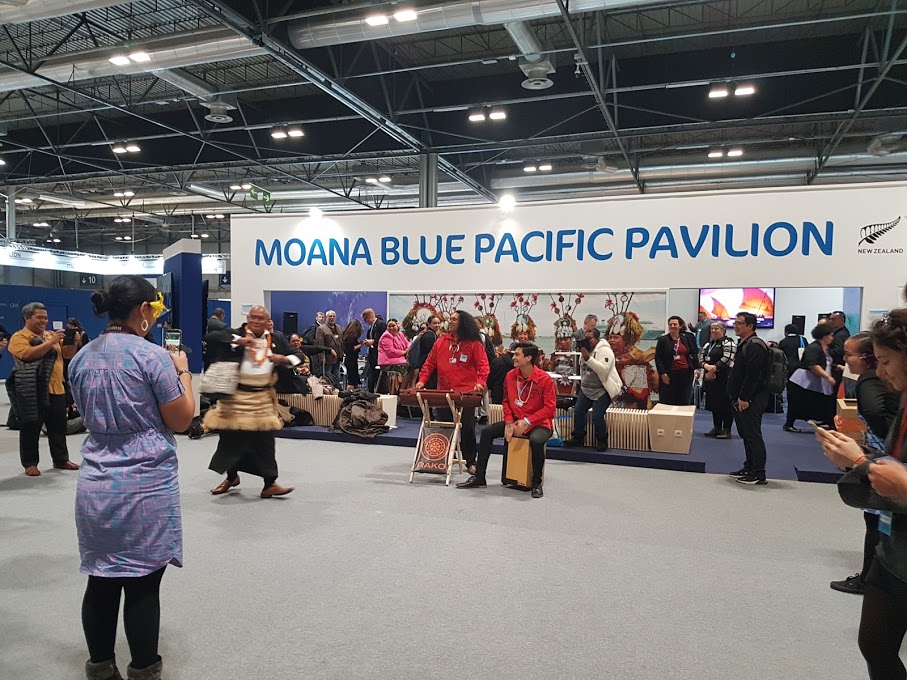
Singing and dancing in front of the Moana Blue Pacific Pavilion where side events are held
There were also several side events that highlighted the impact of climate change on the maritime boundaries of Pacific countries. Boundaries are the baselines for exercising sovereignty for many of these countries, and climate change may threaten this. The presentations highlighted the ongoing work of securing that Pacific island countries have established their maritime zones through submitting claims on the continental shelf and beyond their 200 nautical mile zones. The way this works is that the countries meet and negotiate the boundaries and sign boundary treaties. So in these meetings they moved from features to coordinates. This is, in fact, setting a standard from Pacific island countries for the rest of the world and reflects an important legal innovation.
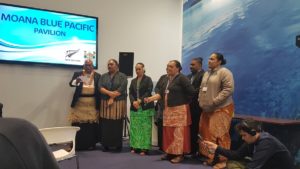
Tongan delegates singing at an event at the Pacific Pavilion
![]()
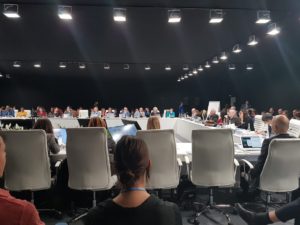
Delegates gathered at the Nairobi Work Programme discussions, this year with a focus on ocean
In order to gain broader support for ocean action within the negotiations, numerous bilateral meetings were held with an aim to get vocal support from parties at the COP President consultations on COP decision 1/CP.25. Oceans gained strong support in the initial consultation rounds from both developed and developing countries for a process moving forward to COP26 and was therefore included in the draft decision. Some of the ocean-climate elements that survived into the final text include the creation of a dialogue in June 2020 to discuss how to strengthen ocean-climate action under UNFCCC, an invitation for submissions from parties and non-party stakeholders to inform the dialogue, and a request for the Chair of the technical body of the UNFCCC to report on its outcomes. In other words, the decisions at this year’s COP25 have made it possible to continue with discussions and outcomes at climate talks in the future that are ocean related. The OceanStates project team is delighted and ready for an exciting year ahead.
Thank you, Santa.
![]()
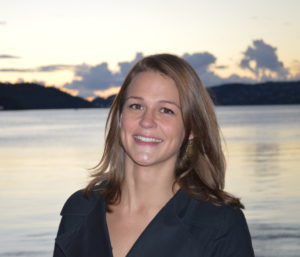
Camilla Borrevik is a postdoctoral fellow at the Department of Social Anthropology, and is the Deputy Director of OceanStates. Her research focuses on climate change, diplomacy, policy, epistemology and Pacific regionalism. She has fieldwork experience from several Pacific countries, and from the United Nations climate negotiations.